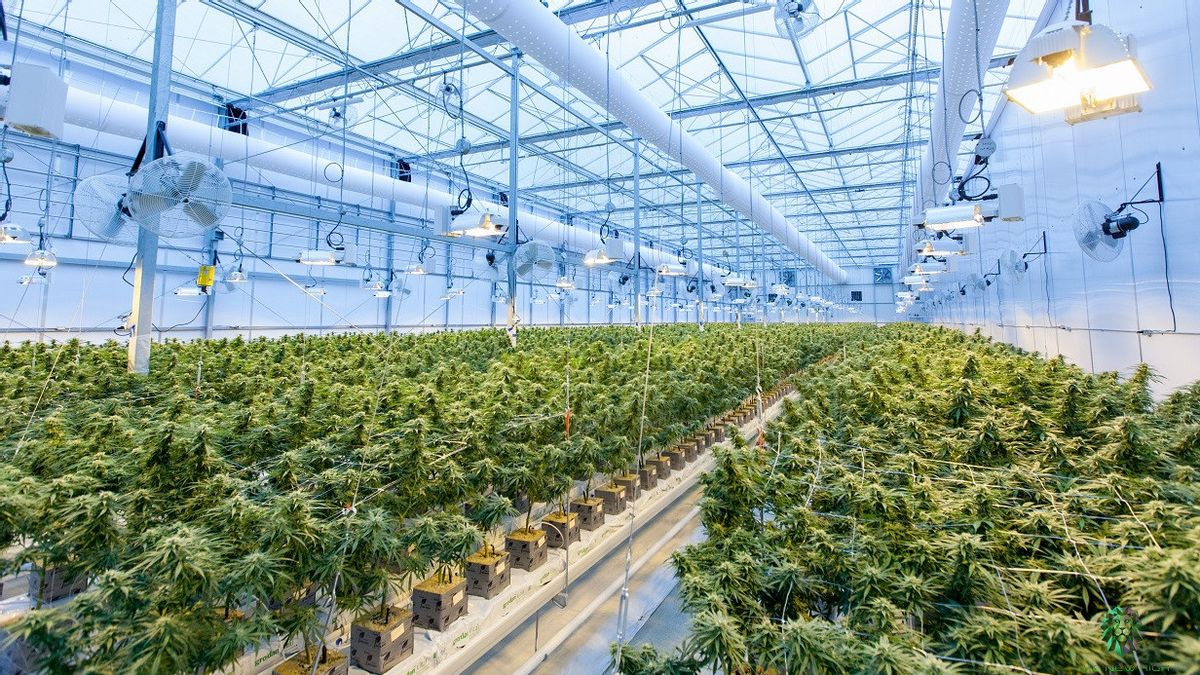JAKARTA - When the legalization of marijuana was greeted with joy and enthusiasm, one thing that certainly followed was the problem of cannabis supply which had to be increased, along with the increasing demand after legalization.
Recently, there has been a lot of discussion regarding the method of cannabis farming related to environmental conservation, related to the carbon footprint left by cannabis.
According to data from the International Narcotics Control Board, the UK is the world's largest producer and exporter of medical and scientific cannabis. However, there has been little discussion around the UK's carbon footprint in relation to cannabis production.
Marijuana growing methods vary widely around the world. However, there are three methods commonly used by cannabis farmers. The first is growing marijuana outdoors, taking advantage of natural sunlight and rainwater.
This method is often considered the least harmful to the environment, but it depends on whether chemical pesticides and rodenticides are used to protect crops. The outdoor approach can also mean lower quality yields.

The second method is to grow marijuana in a greenhouse using sunlight, or artificial light. The environmental impact of this method varies depending on whether artificial lights are used or not, due to electrical factors. Another consideration is how sophisticated the greenhouse itself is.
And third, marijuana can be grown indoors using artificial lighting, heating, ventilation, and even dehumidification. Today, this method is often the most popular method, as it can produce higher quality crops and multiple harvests.
But indoor growth is the most environmentally damaging of all, due to the large amount of electricity it uses, which in turn contributes to carbon emissions. You also need plenty of water to keep the plants alive during the farming process.
"Energy consumption is by far the biggest problem and can be solved by planting in greenhouses, not indoors," said Jouke Piepenbrink, head of marketing for Dutch Passion, an Amsterdam-based cannabis seed company, told Euronews.
"If marijuana is grown outdoors or in greenhouses without artificial light, the environmental impact is very low," he added.

Illegal marijuana growers will often use indoor farming methods to keep the profile low, sometimes even switching to diesel or gasoline generators to avoid using electricity from the grid and arouse suspicion.
The question, is the cannabis ban damaging the planet, by allowing unregulated farmers to use this dangerous cultivation technique, something to consider as the legalization debate rages on?
"These impacts are the result of unregulated cannabis, but none of these impacts would have happened if we didn't have a ban. Ban is the root cause of the environmental impact of cannabis farming," said Dr. Anthony Silvaggio, environmental sociologist and faculty member at the Humboldt Institute for Interdisciplinary Cannabis Research (HIIMR) at California's Humboldt State University.
"It is a problem that we are going to develop a polluting industry in a way that makes it more challenging for us to deal with the climate crisis. Industrial agriculture for hemp is bad for the environment. The soil just can't stand it anymore," he concluded.

To note, the popularity of cannabis products has surged during the corona virus pandemic. The study by Alphagreen, the UK's largest market for CBD products, found that 8 million people had purchased CBD products from the start of the year to May, worth £ 150 million in purchases and a 50 percent growth over 2019.
In Europe, the cannabis industry also continues to grow. This includes products that are flooding the market in countries where THC, the psychoactive compound in marijuana is banned.
"Our market has continued to grow over the last 33 years, but in the last three years a lot has changed," said Piepenbrink, CMO for Dutch Passion.
"We see many countries around the world open in some way, sometimes they start with treatment programs, open home-grown markets, or they allow companies to produce cannabis products for recreational use," Piepenbrink said.
Researchers fear that legalization will not help the environmental crisis if it does not pay attention to an eco-friendly agenda. HIIMR co-director, Dr. Dominic Corva says legalization cannot be said to have one effect or another until it is known what types of legalization are allowed.
"Legalization coupled with environmental policies has the potential to be good for the environment. I've seen large warehouses full of cannabis grown on a scale that shouldn't be the case," he said.
"I have seen irrigation, especially in drought conditions, where big rivers dry up months before they should. Many of my colleagues have seen the use of banned pesticides and rodenticides on public lands," he said worriedly.

That said, there are techniques that cannabis growers can use to increase their carbon footprint, said Dr Corva. Namely, with dry farming methods and companion crops.
Dry farming is about growing crops in a dry climate, without water or irrigation systems. This is better for the environment, as it doesn't deplete precious water reserves in water-scarce areas, especially during the dry season.
Companion planting is when you plant different plants together, which complement and benefit each other. For example, beans and corn. Beans like to climb tall stalks of corn, and corn appreciates the nitrogen provided by beans. Other examples are leeks and lettuce, as they repel insects that are naturally attracted to green leafy vegetables.
This growing method often means that the quality of the crop can be higher, but more importantly it prevents the need for pesticides, as some plants naturally repel insects that eat their companion plants.
However, in the end Dr. Corva concludes that a total ban on large-scale cannabis cultivation is the only way to tackle the environmental crisis. Dangerous methods used to massively destroy land
Experts agree that a stronger emphasis on green policies and the potential for visible legalization could significantly limit environmental damage.
The English, Chinese, Japanese, Arabic, and French versions are automatically generated by the AI. So there may still be inaccuracies in translating, please always see Indonesian as our main language. (system supported by DigitalSiber.id)













